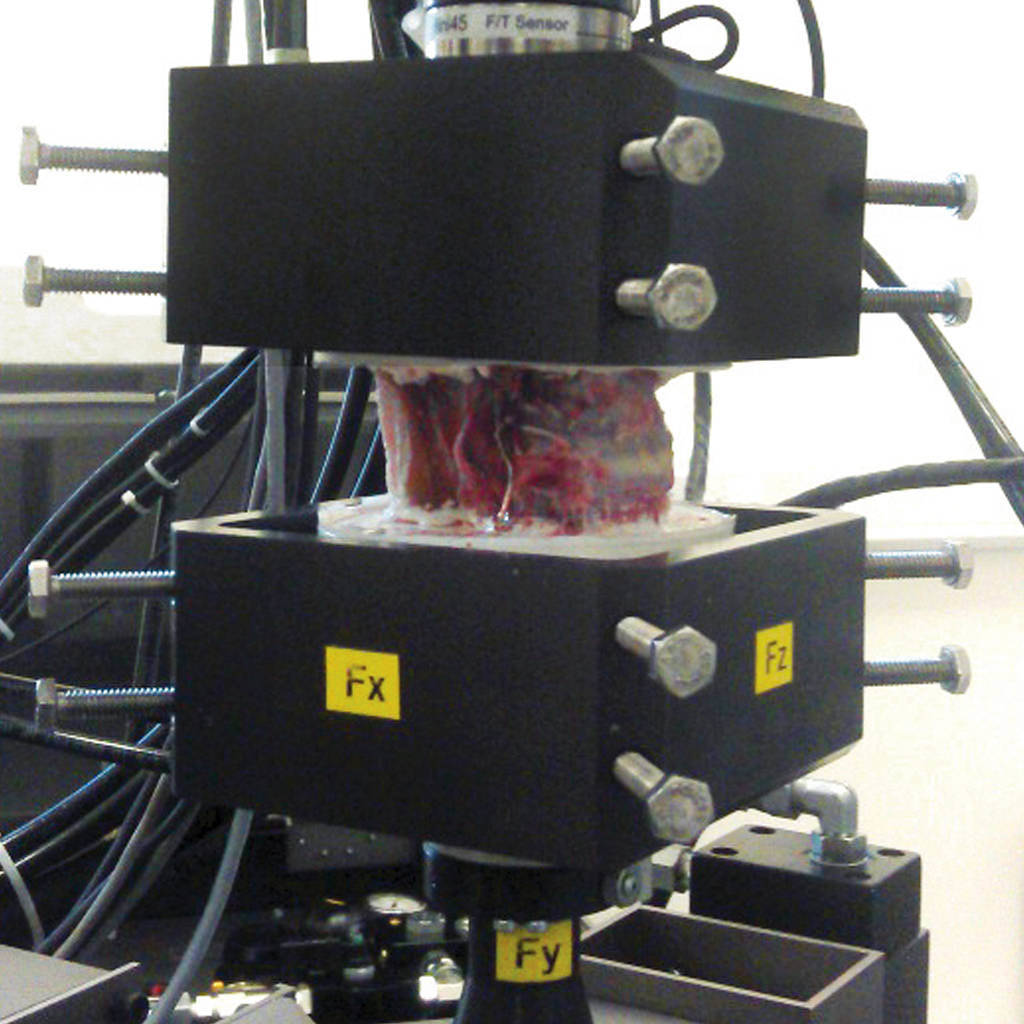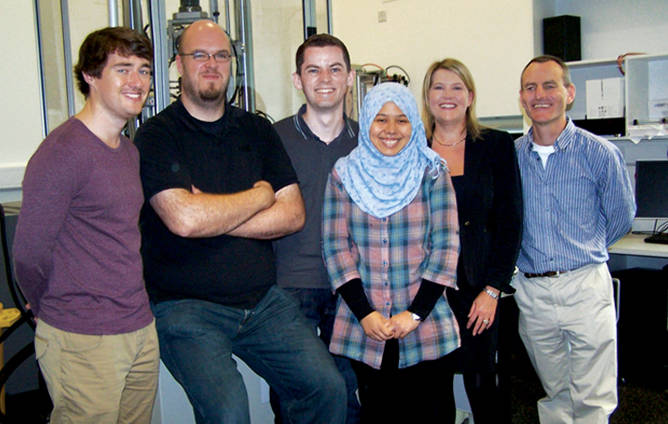
CUSTOMER CHALLENGE
There are 1.4 million trauma-related spinal injuries every year around the world1, of which 15% require surgical intervention2. Many of these cases involve teenagers with their entire lives ahead of them, making pain elimination and mobility restoration especially critical. Improving healing time is also essential. According to a recent Irish study, traumatic spinal injury patients require an average of 46 days of in-hospital care.
The Institute of Technology, Tallaght (ITT Dublin) is a university-level institution located in South Dublin, Ireland. The Bioengineering Technology Centre (BTC) provides applied research within the ITT School of Engineering, offering intensive instruction to a handful of students pursuing advanced degrees in biomechanical engineering. BTC strives to apply engineering principles to medical problems, with the goal of yielding new innovations that can be used in clinical practice to enhance patient quality of life.
Most recently, the BTC has focused its applied research on optimizing two widely used spinal surgery procedures — spinal fracture stabilization and balloon kyphoplasty — to help surgeons produce the best outcomes and minimize common post-surgery complications, both of which reduce hospital time.
The spinal fracture stabilization procedure uses screws and rods to mechanically stabilize the injured portion of the spine. Balloon kyphoplasty uses an inflatable balloon to restore height for a collapsed vertebra, followed by bone cement injection to stabilize the structure. Many kyphoplasty patients fracture adjacent areas of their spine after healing from surgery.
Optimizing both procedures involves the same challenges for the BTC. The researchers must find a way to gather meaningful test data in a test lab environment, through the accurate replication of in-vivo loads and moments of the human spine.
“The spine is a fascinating area of study, because it is such a complex mechanical system with so many unknowns,” said Colin Bright, the postgraduate student leading the fracture stabilization study. “Our goal was to capture data from real-life simulations and adapt it to a test environment in order to reduce the unknowns with fracture stabilization and balloon kyphoplasty.”
MTS SOLUTION
The BTC employs an MTS Model 858 Bionix® Test System with MTS FlexTest® controls and MTS MultiPurpose TestWare® software to support its applied research initiatives. This servohydraulic system can precisely simulate a full range of motions to spine specimens in six degrees of freedom, including flexion, extension, lateral bending, torsion, X-axis shear and Z-axis shear. Test load data from a six-degrees-of-freedom load cell and test displacement data from angular displacement transducers are acquired during the kinematic simulations on the test system.
Both the fracture stabilization and balloon kyphoplasty studies utilize porcine vertebral specimens, which are similar in size and
structure to the human spine. The MTS Bionix test system is first used to induce spinal injuries that both procedures typically treat. Next, each procedure is performed on the specimen and then subjected to a series of static and fatigue mechanical tests.
For spinal fracture research, the team first statically evaluates the performance of the vertebrae when loaded to failure across the neural arch, helping to determine both the amount of force required and the bone deflection at failure. Next, rectangular rosette pattern strain gauges are attached to the neural arch to calculate the direction and magnitude of principal strain under various loads and motions.
For kyphoplasty research, a series of compression-type tests are used to assess the procedure’s effectiveness in restoring vertebrae
stiffness and strength. Results will provide valuable information for surgeons to minimize or even eliminate the need for spinal fusion, while maintaining adequate support to prevent further fractures.
“With the data we’re gathering from these tests, we are well on our way to providing a validated finite element model to analyze the mechanical implications of the kyphoplasty treatment,” said Philip Purcell, the postgraduate student leading the kyphoplasty research.
CUSTOMER BENEFITS
According to BTC founder Dr. Fiona McEvoy, the simplicity, flexibility and capabilities of the MTS Bionix test system have been essential to empowering her research teams to unearth new insights about spine kinematics, many of which are ultimately put to use in the operating room.
“Being able to carefully choreograph spinal movements in the test lab and correlate those movements with test data is a rare capability, and it makes us a very unique and busy facility,” McEvoy said. “Since the MTS user experience is so intuitive and test setups are so fast, our students can really get creative and explore multiple approaches.”
The Irish spinal research community eagerly awaits complete results for the fracture stabilization and balloon kyphoplasty studies. These results will have a potentially global impact, because the BTC maintains a close working relationship with spinal surgeons throughout Ireland, who freely share their surgical innovations with colleagues across Europe and beyond.
“With a better understanding of spine biomechanics and how they are altered after fracture stabilization and balloon kyphoplasty, the surgical community will move a major step closer to offering more individualized procedures for each patient based on validated data,” Philip Purcell said. “Patients will spend less time on the operating table, recover faster and experience far fewer post-surgery complications. All of this saves time and money for everyone involved, not to mention improving quality of life.”

